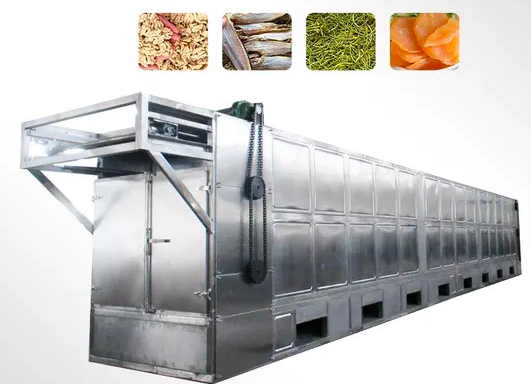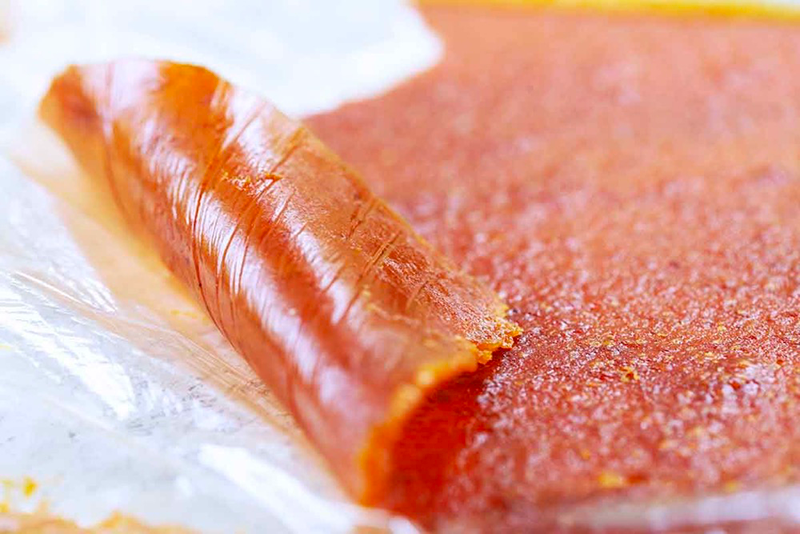
Content Menu
● Understanding Food Dehydration
>> How Does a Food Dehydrator Work?
● The Financial Benefits of Using a Food Dehydrator
● How Much is a Food Dehydrator?
● Choosing the Right Food Dehydrator
● Practical Tips for Maximizing Savings with Your Food Dehydrator
● Types of Foods Suitable for Dehydration
>> Fruits
>> Vegetables
>> Herbs
>> Meats
>> Grains
● Storage Techniques for Dehydrated Foods
● Health Benefits of Using a Food Dehydrator
● Conclusion
● FAQ
>> 1. What types of foods can I dehydrate?
>> 2. How long does it take to dehydrate food?
>> 3. Can I use frozen fruits for dehydration?
>> 4. What's the best way to store dehydrated foods?
>> 5. How much does it cost to run a food dehydrator?
● Citations:
Food dehydrators have become increasingly popular among health-conscious consumers and those looking to save money on groceries. By removing moisture from food, these devices extend shelf life, minimize waste, and allow for the preservation of seasonal produce. This article explores the financial benefits of using a food dehydrator, how it works, and practical tips for maximizing savings.

Understanding Food Dehydration
Food dehydration is a process that involves removing moisture from food to inhibit the growth of bacteria, yeast, and mold. This method preserves the food while retaining its nutrients and flavors.
How Does a Food Dehydrator Work?
A food dehydrator operates by circulating warm air at low temperatures (typically between 85°F to 160°F) around the food. This gentle heat ensures that the food dries evenly without cooking it, which helps maintain its nutritional value.
- Energy Efficiency: Compared to conventional ovens, dehydrators use less energy. For instance, running a 1000W dehydrator for 12 hours consumes significantly less electricity than a 5000W oven operating for the same duration.
The Financial Benefits of Using a Food Dehydrator
Using a food dehydrator can lead to substantial savings in several ways:
1. Reducing Food Waste: One of the primary benefits of dehydration is its ability to preserve excess food that might otherwise spoil. By dehydrating fruits and vegetables that are nearing their expiration date, you can prevent waste and save money.
2. Buying in Bulk: Purchasing seasonal produce in bulk when prices are lower allows you to dehydrate and store these items for later use. For example, buying strawberries in summer and dehydrating them can provide snacks throughout the year at a fraction of the cost of store-bought dried fruit.
3. Homemade Snacks: Store-bought snacks often come with high prices and added preservatives. By making your own dried snacks (like fruit leathers or vegetable chips), you can save money while ensuring they are healthy and free from additives.
4. Long Shelf Life: Dehydrated foods can last up to two years when stored properly, which means fewer trips to the grocery store and less money spent on perishable items.
5. Versatile Uses: Dehydrated foods can be rehydrated for use in soups, stews, and casseroles, making them versatile ingredients that can help stretch your grocery budget further.
How Much is a Food Dehydrator?
The price of food dehydrators varies widely based on features and capacity:
- Basic Models: Entry-level dehydrators can be found for as low as $40-$70.
- Mid-Range Options: More advanced models with adjustable temperature settings and larger capacities typically range from $80-$150.
- High-End Units: Professional-grade dehydrators with multiple trays and advanced features can cost upwards of $200 or more.
Investing in a quality dehydrator can pay off quickly through savings on groceries and reduced waste.
Choosing the Right Food Dehydrator
When selecting a food dehydrator, consider the following features:
- Adjustable Temperature Settings: Essential for safely drying various types of food.
- Capacity: Depending on your needs, choose a model that fits your kitchen space and drying requirements.
- Ease of Cleaning: Look for dishwasher-safe trays or easy-to-clean surfaces.
- Fan Placement: Horizontal airflow models tend to dry more evenly compared to vertical airflow models.
Practical Tips for Maximizing Savings with Your Food Dehydrator
To make the most out of your food dehydrator:
- Plan Ahead: Buy seasonal produce in bulk when prices drop.
- Experiment with Recipes: Try different foods like herbs, meats, and grains to diversify your pantry.
- Store Properly: Use vacuum sealing techniques to extend the shelf life of your dehydrated foods.
- Monitor Drying Times: Keep an eye on drying times as they vary by food type; this ensures optimal texture and flavor.

Types of Foods Suitable for Dehydration
Understanding which foods are best suited for dehydration can help you maximize your savings:
Fruits
Fruits such as apples, bananas, strawberries, and peaches are excellent candidates for dehydration. They retain their sweetness when dried and make nutritious snacks.
- Preparation Tips: Wash thoroughly, peel if necessary, core or slice into uniform pieces to ensure even drying. Consider dipping in lemon juice to prevent browning.
Vegetables
Vegetables like tomatoes, carrots, zucchini, and bell peppers can be dried for later use in soups or stews.
- Preparation Tips: Blanching vegetables before dehydration helps preserve color and nutrients. Cut into uniform pieces for consistent drying times.
Herbs
Herbs such as basil, thyme, oregano, and parsley dry well and can be stored for long periods without losing flavor.
- Preparation Tips: Harvest herbs at their peak flavor; wash gently and dry before placing them in the dehydrator whole or chopped.
Meats
Making jerky is one of the most popular uses for food dehydrators. Lean cuts of beef or turkey work best.
- Preparation Tips: Marinate meat beforehand for added flavor; slice thinly against the grain for optimal texture during drying.
Grains
Grains like rice or pasta can also be dried after cooking to prolong shelf life; however, they require proper storage conditions to prevent moisture absorption after dehydration.
Storage Techniques for Dehydrated Foods
Proper storage is crucial to maintaining the quality of your dehydrated foods:
- Airtight Containers: Use glass jars or vacuum-sealed bags to keep out moisture.
- Cool Dark Places: Store containers in a cool, dark area away from sunlight to prevent degradation.
- Labeling: Clearly label containers with dates so you know when items were dried; this helps prioritize usage based on shelf life.
Health Benefits of Using a Food Dehydrator
Beyond financial savings, using a food dehydrator offers several health benefits:
1. Nutrient Retention: Dehydration preserves many nutrients found in fresh fruits and vegetables compared to other preservation methods like canning.
2. Control Over Ingredients: Making your own snacks allows you to avoid preservatives and unhealthy additives commonly found in commercial products.
3. Encouraging Healthy Snacking: Having healthy snacks readily available encourages better eating habits compared to reaching for processed options.
4. Dietary Customization: You can tailor your dried foods to meet specific dietary needs or preferences (e.g., gluten-free or low-sugar).
Conclusion
Using a food dehydrator not only helps preserve food but also offers significant savings over time. By reducing waste, enabling bulk purchases, creating homemade snacks, and promoting healthier eating habits, consumers can enjoy healthier eating while keeping their grocery bills in check. Whether you're an avid hiker looking for lightweight snacks or simply want to reduce your household waste, investing in a food dehydrator is a smart choice that pays off both financially and nutritionally.

FAQ
1. What types of foods can I dehydrate?
You can dehydrate fruits, vegetables, herbs, meats (like jerky), grains, and even sauces.
2. How long does it take to dehydrate food?
Dehydration times vary depending on the type of food and thickness; generally, it ranges from 4 hours to over 12 hours.
3. Can I use frozen fruits for dehydration?
Yes! Frozen fruits can be thawed and then dehydrated; they are often easier to work with since they are already cut.
4. What's the best way to store dehydrated foods?
Store them in airtight containers or vacuum-sealed bags in a cool, dark place to maximize shelf life.
5. How much does it cost to run a food dehydrator?
Running costs depend on your local electricity rates; however, they are generally more energy-efficient than using an oven for long drying times.
Citations:
[1] https://www.bestbuy.com/discover-learn/10-reasons-to-buy-a-food-dehydrator/pcmcat1634332391134
[2] https://www.webstaurantstore.com/guide/741/food-dehydrators-buying-guide.html
[3] https://www.thespruceeats.com/best-food-dehydrators-4077285
[4] https://www.youtube.com/watch?v=mtDzdYoyeR8
[5] https://www.freepik.com/free-photos-vectors/food-dehydrator
[6] https://airtekdehydrator.com/health-advantages-using-food-dehydrator/
[7] https://www.freshoffthegrid.com/dehydrating-food/
[8] https://www.alibaba.com/showroom/food-dehydrator-machine.html
[9] https://www.youtube.com/watch?v=rR2G5UO-5Ms
[10] https://brodandtaylor.com/pages/dehydrating











